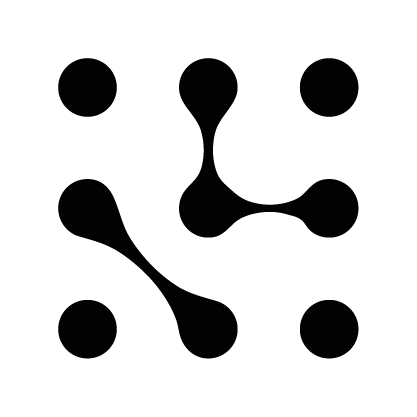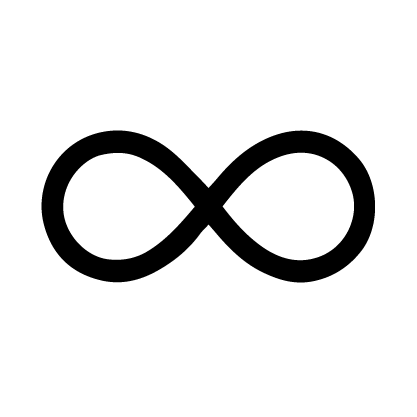D1: Lifestyle Design
Part of the Agilism Framework (Dimension 1 of 5).
Each Dimension in the Agilism Framework explores a different pathway through change.
This one—Lifestyle Design—is about reconfiguring different aspects of your life as it shifts, with clarity as your guide.
What follows is an introduction to the core ideas behind this Dimension before opening the five Principles that give it shape—practical perspectives for building a more flexible lifestyle.
The bar above indicates your current position in the framework, and the arrows on the right allow you to move between Dimensions.
Lifestyle design isn't optional anymore
The real skill is learning how to rearrange — continuously, flexibly, and strategically — as life shifts.
Explore how this Dimension reshapes the way you design your life.
Why the Old Model No Longer Works
We didn’t always need to think this way.
For most of modern history, life followed a predictable script: study, work, retire. That linear path promised stability – but it also created dangerous blind spots.
We built careers before lives, postponed meaning until later, and assumed the future would simply fall into place.
The model worked as long as the world moved slowly enough to accommodate it.
But change accelerated beyond what linear thinking could handle.
Careers now loop, pause, and restart without warning. Meaning shifts as we do. A fulfilling life isn't something we construct after checking all the traditional boxes—it's something we design through adaptability itself.
The old script assumed momentum would carry us forward. The new reality demands we create that momentum ourselves, again and again, through each transition.
Why This Matters Now
We’re no longer living in a linear world.
The old “study-work-retire” life map is a relic of the past. Back then, we could say that life was pretty much designed for us.
But these days, life often feels like a series of pivots, pauses, and reboots. The world won't stop shifting–industries, technologies, identities, relationships, and priorities.
Without an intentional approach to shaping your life, you risk always playing catch-up, in a constant state of anxiety, and never quite finding your rhythm.
Think of Lifestyle Design as your personal operating system for navigating this new reality, helping you build clarity and momentum as the world around you changes.
Whether you're reevaluating your priorities, undergoing a reinvention, or simply trying to stay grounded during a transition, Lifestyle Design offers a framework for intentional, lasting change.
Life isn't linear. The way you design your life shouldn't be either.
Lifestyle Design: The 5 Core Principles For Designing a Flexible Life
When life doesn’t go in a straight line, why should your lifestyle? These five principles are the foundation of intentional, adaptable living.
Each Principle provides a lens through which to approach flexible living — though the real depth lies in what follows below the grid, where we explore what Lifestyle Design actually means, and perhaps more importantly, what it doesn't.
1. Lifestyle Design
Learn how to reconfigure as life shifts – with clarity, not chaos
What Lifestyle Design Is Not
When we hear the phrase "Lifestyle Design," we often jump to the wrong conclusions. We imagine a Pinterest-perfect vision board. A beautiful aesthetic. A rigid productivity cult. A "quit-your-job-and-move-to-Bali" fantasy.
That's not what this is!
Lifestyle Design isn't about escape or surface-level hacks. It's not a privilege check, a set of life hacks, a reward, or some perfectly curated morning or evening routine.
If that's what you were imagining, I'm going to disappoint you. However, if you're seeking a flexible framework that can adapt to your life and is significantly more powerful, keep reading.
What Lifestyle Design Is
Lifestyle Design is about building a structure that supports your time, energy, finances, relationships, and, yes, even your evolving identity — in a way that works not just for the ideal future you imagine, but for the messy, unpredictable life you live today.
At its core, Lifestyle Design is a rigorous and intentional process.
It's a lot less about following what someone else says works.
It's a lot more about reshaping and rearranging your reality based on where you are now, the world around you, and where you're headed.
It's not about daydreaming; it's about using design thinking for adaptive, flexible living.
It's a lot less about setting distant life goals and then sacrificing your current lifestyle in the hope that they will one day come true.
It's a lot more about envisioning your desired lifestyle and then working backwards to shape it - in an agile way!
👉 Want a refresher? Jump back to the 5 Principles →
Why It Matters Now More Than Ever
Here’s why this mindset matters more than ever — and what it changes in how we live.
1. Reinvention Is the New Constant
It wasn’t long ago that switching careers once or twice in your life was the norm. Now, it’s almost guaranteed you’ll pivot several times, whether you plan for them or not.
Historian Yuval Noah Harari calls the ability to adapt and reinvent ourselves “the most important skill of the 21st Century." Lifestyle Design is the system to help you do just that.
Think of your ability to adapt as a system, not a reaction. When your job, business, relationship, financial situation, or health evolves, don’t stay stuck. Shift your system.
Lifestyle Design helps you make those shifts with intention, so you’re always moving forward.
2. Freedom Is Thrilling–But It Requires Some Design
We all dream of remote work, building a portfolio career, leaving the 9-5. The thought of it is exhilarating.
But here’s the catch: there’s no map, no guide, no one telling you which way to go.
You might be tempted to follow somebody else's playbook. Don't! What worked for them - at the particular moment in history - probably won't work for you.
That’s where Lifestyle Design steps in. It’s more than career planning. Think of it as building the architecture of your identity and how you want to live.
- What rhythm do you want your days to follow?
- Who surrounds you while you work and play?
- How do you want to feel as your week wraps up?
The Lifestyle Design dimension gives you the scaffolding for working this out.
3. Learn How to Thrive Amid Change Without Burning Out
Yes, it's become a bit of a cliché that the only constant is change.
But doing so without losing your footing or your sanity? That’s the real game.
Lifestyle Design isn't just about imagining your future. It's integrating a mindset that keeps you mentally, emotionally, and physically ready for whatever comes your way.
Small shifts in thinking alongside small daily practices can make or break how you handle the shift.
4. Life Has Many More Life Chapters (And That's a Great Thing)
We have a tendency to believe that life moves progressively and sequentially, in terms of, 'the next level', 'onwards and upwards.'
Instead, it unfolds more like a mosaic, with countless chapters overlapping, repeating, and intertwining. Imagine:
- Raising a family while launching a new career
- Developing a new income stream
- Coming out of retirement
- Pivoting your business
The key is to stop treating progression as a straight line. Life’s chapters don’t line up neatly one after another, and they don’t need to. Each one brings new needs, tools, and clarity, which is precisely where the concept of diversification comes in.
When you stop “betting it all” on one identity, role, or income stream, you give yourself more freedom and flexibility to pivot confidently.
This mindset isn’t about chaos; it’s about preparation. Lifestyle Design helps you map out your mosaic, allowing you to flow between these non-linear chapters with purpose, rather than guessing.
Instead of asking, “What’s next?” ask, “What fits right now?”
👉 Want a refresher? Jump back to the 5 Principles →
Final Thoughts
Lifestyle Design isn’t an indulgence.
It’s the scaffolding that keeps you moving forward.
When change is constant, you need a system that helps you build something meaningful — a life that aligns with clarity, adaptability, and purpose.
In Agilism, this is where we always start. Your life isn’t just something you live. It’s something you shape — and continuously rearrange.
Frequently Asked Questions
Still curious? Here are some of the most common questions we've received from our readers about Lifestyle Design and what makes it different.
▶ What is Lifestyle Design?
A: Lifestyle Design is about intentionally crafting how you live—not by following a predetermined script, but by creating a framework that can evolve as you do. It’s less about achieving picture-perfect goals and more about building a system that works with the moving parts of your life.
▶ Is Lifestyle Design just another productivity fad?
A: Not even close. It’s not about cramming more into your day; it’s about aligning your time and energy with what truly matters. Productivity is about quantity. Lifestyle Design is about quality and creating a flexible, meaningful life that works for you.
▶ Do I need a career change or become an entrepreneur to "design my life"?
A: Definitely not. That’s an outdated stereotype. Lifestyle Design isn’t about extreme changes or moving halfway across the world. It’s about small, intentional adjustments that fit your life—whether you’re building a career, raising kids, launching a project, or simply looking for balance.
▶ Who is Lifestyle Design for?
A: It’s for anyone at a crossroads in life. Career changes, midlife shifts, personal growth... or even just realizing the old ways no longer work. It especially resonates with people self-defining success and fulfillment on their own terms.
▶ How does Lifestyle Design connect to the Agilism framework?
A: Lifestyle Design is the foundation. Think of it as building your foundation. Before building flexibility or mastering change, you need a personal system that evolves with you, blending clarity, adaptability, and intentional action.
▶ How do I start practicing Lifestyle Design in everyday life?
A: Dive into the 5 Principles of Lifestyle Design. Start with one principle as a lens to evaluate your life or shift your path step by step. It’s not about overhauling everything overnight. To take it deeper, grab the full framework or subscribe to our newsletter for weekly tips and real-life tools.
👉 Want a refresher? Jump back to the 5 Principles →
Next Steps:
If this Dimension resonated with you, here’s how to continue your journey through the Agilism Framework.
- Get the “21 Principles” PDF →
Subscribe to our newsletter to get your copy and stay updated with fresh insights as the framework evolves. - Return to the Full Agilism Overview →
A primer on what it is, where it came from, and why it matters. - Explore the Dimensions →Lifestyle Design, Navigating Uncertainty, Reframing Your Thinking, Emotional Flexibility, Goal Dynamics.
Not sure where to begin? Start with the dimension that feels most relevant to your current challenge or opportunity.

Previous

Next
Explore the Other Agilism Dimensions
Browse other Dimensions to expand your Agilism journey











